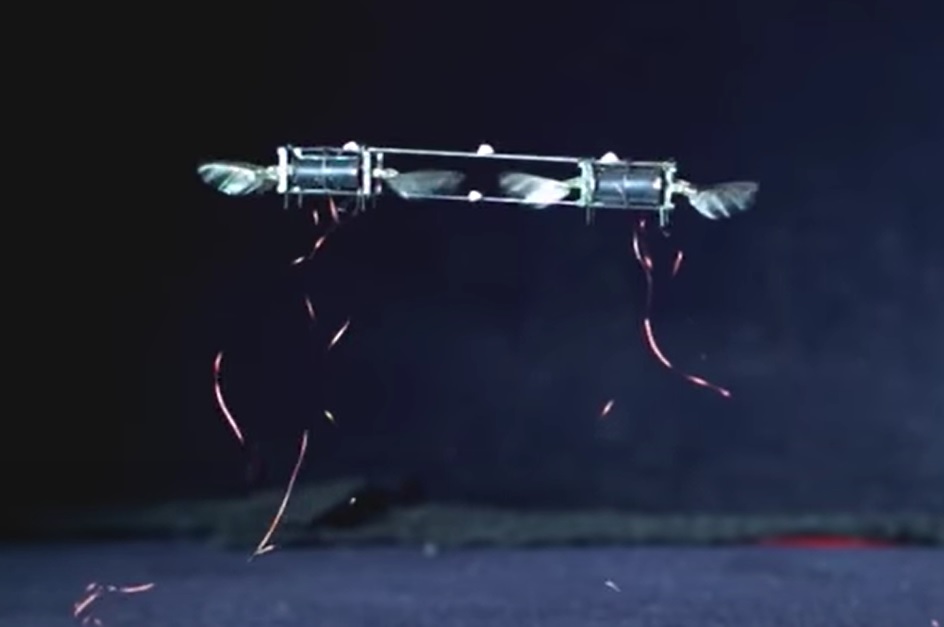This post is also available in:
 עברית (Hebrew)
עברית (Hebrew)
Typically, drones require wide-open spaces because they’re neither nimble enough to navigate confined spaces nor robust enough to withstand collisions in a crowd.
A team of researchers from MIT, Harvard University and City Univ. of Honk Kong have developed tiny, agile drones who look, act and maneuver like actual insects.
These mini-aerialists could navigate complex machinery to ensure safety and functionality, perform artificial pollination of crops or complete search-and-rescue missions following a disaster.
MIT Assistant Professor Kevin Yufeng Chen has built a system that approaches insects’ agility. He developed insect-sized drones with unprecedented dexterity and resilience.
The aerial robots are powered by a new class of soft actuator, which allows them to withstand the physical travails of real-world flight.
The major alternative until now has been employing a small, rigid actuator built from piezoelectric ceramic materials. While piezoelectric ceramics allowed the first generation of tiny robots to take flight, they’re quite fragile.
Chen designed a more resilient tiny drone using soft actuators. The soft actuators are made of thin rubber cylinders coated in carbon nanotubes. When voltage is applied to the carbon nanotubes, they produce an electrostatic force that squeezes and elongates the rubber cylinder. Repeated elongation and contraction causes the drone’s wings to beat — fast.
Chen’s actuators can flap nearly 500 times per second, giving the drone insect-like resilience, according to mit.edu.


























